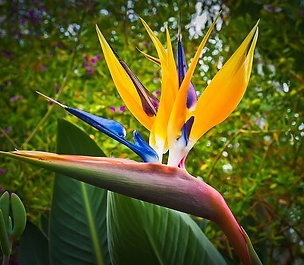Bird of Paradise plants add a lovely island feel to any garden. They can be grown as a specimen plant both inside and out. If you grow the plant outside, you will have continuous blossoms throughout the heat of the summer. However, if you choose to grow the Bird of Paradise as an indoor plant, it may be difficult to force it to bloom. But it can be done!
Regardless of where you place them, either in a large colorful pot nestled inside a foyer or next to a couch or outside as a border, you can bring that beauty of the islands to your own home. Read on to learn how to care for Bird of Paradise plants both inside and out.
(Some of the links within this post are affiliate links on which I receive a small compensation from the sale of certain items with no extra cost to you.)
(As an Amazon Associate I earn from qualifying purchases.)
Variations
Bird of Paradise are known for their resemblance to tropical birds, hence the name. Here is a picture of an actual Bird of Paradise. You can see how the flower got its name!
There are 5 known varieties of Bird of Paradise, all of which belong to the Strelitziaceae family. Since they originated in the subtropical coastal areas of South Africa, they all will thrive in a similar warm and humid environment. In the United States, they thrive in USDA zones 10 through 12. They can also be grown in colder zones if taken inside for the winter.
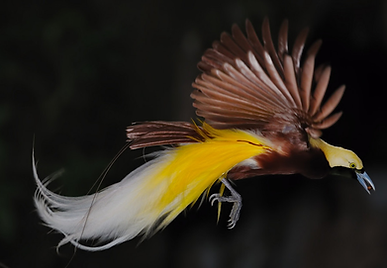
Tall Varieties
There are important differences among the varieties to consider, namely their mature size and the colors of their blooms. Some varieties, such as the white-flowered S. alba, are very tree-like and can grow up to 30 feet tall. Others will grow to 20 feet and have black-beaked, white tufted flowers like the S. caudata variety. The S. caudata Bird of Paradise is common to the mountains of southern Africa. Both species have wide banana style leaves.
These two varieties will not fare well as a house plant! But if you live in a tropical or subtropical region, they will add beauty to your outdoor garden.
The S. nicolai variety resembles a banana tree with wide leaves and will grow to 20 feet tall. Its flower is quite large and striking, sometimes referred to as the giant white bird of paradise, as it has a white flower with a blue and gray colored “beak”.
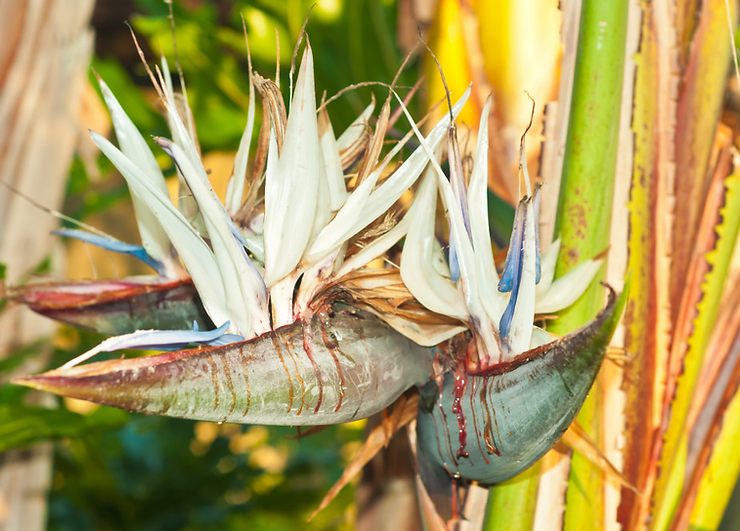
Shorter Varieties
The S. juncea variety has reed-like leaves with smaller blue and orange flowers. This variety will stop growing between 3 and 6 feet tall which makes it perfect as an indoor plant. They typically bloom in the heat of the summer or year round if you live in a tropical area. If you bring them in for the winter, the lovely green foliage will add summer’s warmth inside.
S. reginea is the most common species of Bird of Paradise. It is normally grown in warm climates of the United States such as southern California and Florida. It will bloom sporadically year round and grows to only five or six feet. The flowers are quite easy to spot since the plant is so short.
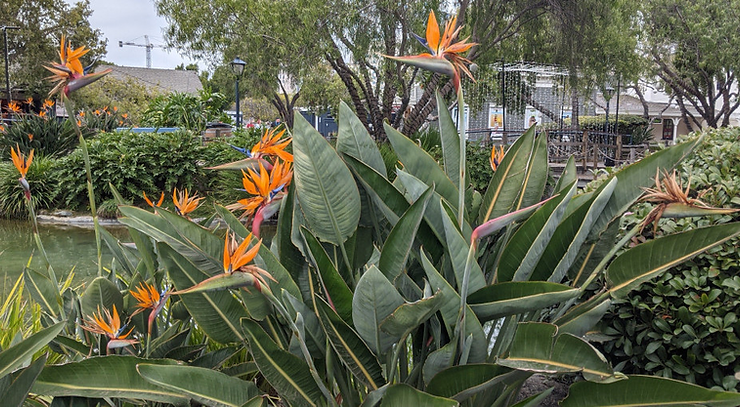
Most Common Varieties for Indoors
The two most common varieties grown as indoor plants are S reginea and S. nicolai.
Care of Bird of Paradise Outdoors in the Ground
If you live in a tropical or subtropical area, it is quite simple to grow Bird of Paradise plants outside.
Zones
Your plant will grow well if you live in USDA zones 10 through 12. You can also plant Bird of Paradise outside if you live in zone 9, however the buds are sensitive to the cold. Protect them if you have a cold spell.
Light
Plant them full sun to produce smaller blossoms on shorter stems. If you desire larger flowers on taller stalks, plant them in partial shade.
Spacing
Bird of Paradise will thrive best if planted 6 feet apart. This allows them to “spread their wings” and produce beautiful flowers without the risk of mold developing due to too much moisture.
Soil
These tropical plants enjoy rich, fertile, well-drained, organic soil which is commonly found in tropical locations.
Water
In order to provide the best environment, the soil must remain consistently moist throughout the summer months. Do not plant Bird of Paradise where water puddles. Instead plant them where the water drains well. In the winter months they prefer dryer conditions.
Fertilizer
Bird of Paradise are heavy feeders, however, too much fertilizer will do irreparable damage to the plant. Only fertilize during the growing periods of spring and summer and use either a slow release fertilizer or a liquid variety.
DO NOT apply the fertilizer to leaves, stalks, stems, or blossoms!
The fertilizer should have an equal distribution of nitrogen (N), phosphorous (P), and potassium (K); a 20-20-20 mixture if you have well balanced soil. A good slow release fertilizer is Jack’s Classic All Purpose Plant Food sold on Amazon.
If your soil is a bit depleted of nutrients, add a 4-4-6 fertilizer to restore its deficiencies. Use a simple pH soil test kit to determine the alkalinity of your soil. Dr. Earth Exotic Blend fertilizer is a good choice from Amazon.
Care of Bird of Paradise Indoors
If you provide it with proper care, a Bird of Paradise can grow beautifully indoors and add a tropical statement to your home. Read below to learn how to care for your Bird of Paradise indoors.
Light
Place your plant where it will get the most sunlight. Bird of Paradise prefer full sun. One exception is if you place it in a sunroom that gets very hot and has continuous sunlight. If this is the case, position your plant away from direct sunlight but where it will still receive full indirect light.
An east or west facing window is ideal for Bird of Paradise indoors.
Soil
A Bird of Paradise thrives on rich, well-drained soil. Try a good organic mix full of nutrients.
Water
Keep your plant evenly moist but not sopping wet during the spring and summer. A regular watering schedule is perfect for this type of plant. Do not allow it to sit in water. In the fall and winter when it is dormant allow the plant to dry out between waterings.
Humidity
Since a Bird of Paradise is tropical, it prefers a humid area. Place it next to other plants to retain humidity and use a mister frequently to keep the humidity levels higher.
Fertilizer
Like the outdoor varieties of Bird of Paradise, the indoor plant enjoys its fertilizer. Use a slow release fertilizer in early spring and early summer. Do not over fertilize the plant as doing so can be detrimental to its health and longevity.
Insects
Bird of Paradise are susceptible to scale, mealy bugs, and spider mites. It is easy to spot these intruders. If you notice them, wipe the leaves gently with a soft cloth rung out in warm soapy water. Do not use spray insecticides because they can harm the finish on the leaves.
Scale:
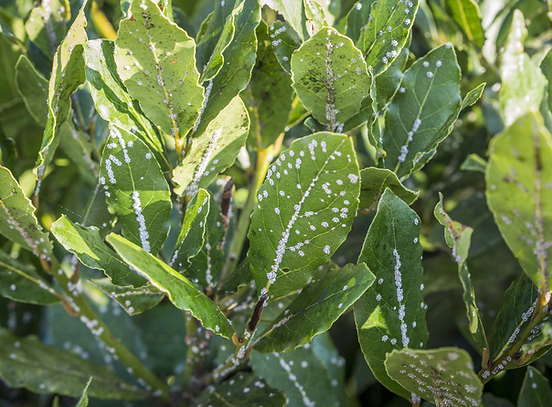
Mealy Bugs:
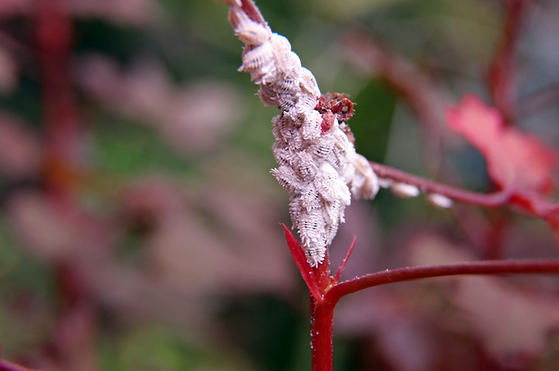
Spider Mites:
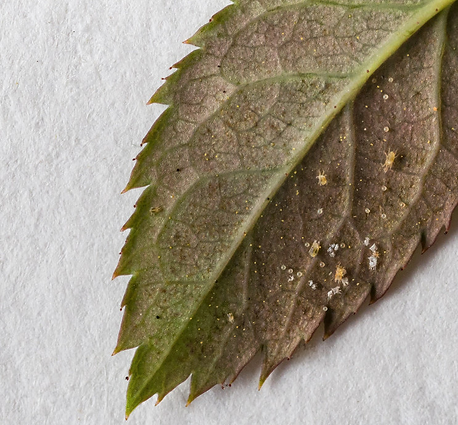
Blossoms of Bird of Paradise Indoors
It is difficult to get Bird of Paradise to bloom indoors. However, it can been done if you simulate the exact environment the plant would experience outside in a tropical setting.
Be sure to give it good light, even amounts of water, humidity, and fertilizer as directed above. You may be one of the lucky ones and see it blossom during the summer months! I hope you are!
You can also place the plant outside in the summer months, which would simulate a tropical locale if you live in a warmer, humid climate. This placement should almost guarantee blooms.
For more on tropical oases in your own backyard, click Plants That Transport you to the Tropics.
How to Care for Bird of Paradise Plants/ Conclusion
Bird of Paradise plants are a beautiful addition to any garden, be it outdoors or inside. By supplying them with proper soil, light, water, humidity, and fertilizer you will benefit from the joys of owning and caring for these beautiful tropical plants. You’ll be a loving plant parent before you know it! Take care of those plant babies!
Happy Gardening,
Nina

